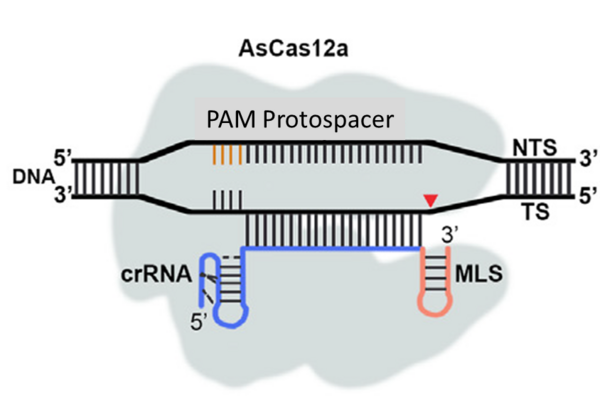Mitochondrial gene editing holds great promise as a therapeutic approach for mitochondrial diseases caused by mutations in the mitochondrial DNA (mtDNA). Current strategies focus on reducing mutant mtDNA heteroplasmy levels through targeted cleavage or base editing. However, the delivery of editing components into mitochondria remains a challenge. Here we investigate the import of CRISPR-Cas12a system guide RNAs (crRNAs) into human mitochondria and study the structural requirements for this process by northern blot analysis of RNA isolated from nucleases-treated mitoplasts. To investigate whether the fusion of crRNA with known RNA import determinants (MLS) improve its mitochondrial targeting, we added MLS hairpin structures at 3’-end of crRNA and demonstrated that this did not impact crRNA ability to program specific cleavage of DNA in lysate of human cells expressing AsCas12a nuclease. Surprisingly, mitochondrial localization of the fused crRNA molecules was not improved compared to non-modified version, indicating that structured scaffold domain of crRNA can probably function as MLS, assuring crRNA mitochondrial import. Then, we designed a series of crRNAs targeting different regions of mtDNA and demonstrated their ability to program specific cleavage of mtDNA fragments in cell lysate and their partial localization in mitochondrial matrix in human cells transfected with these RNA molecules. We hypothesize that mitochondrial import of crRNAs may depend on their secondary structure/sequence. We presume that imported crRNA allow reconstituting the active crRNA/Cas12a system in human mitochondria, which can contribute to the development of effective strategies for mitochondrial gene editing and potential future treatment of mitochondrial diseases.

